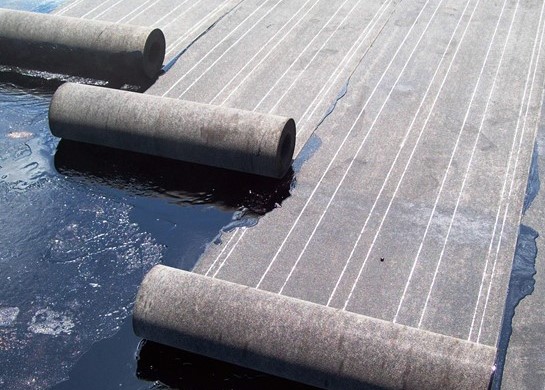
Membrane
A waterproofing membrane is a thin layer of water-tight material that is laid over a surface. This layer is continuous and does not allow water to pass through it. For example, on a flat terrace, a waterproofing membrane could be laid above the structural slab and below the finish tiles. This will ensure that water does not seep into the structural slab. The tiles and membrane must be laid over a filler material that is sloped to ensure that water flows into sumps and drains. Any water that remains as puddles over the tiles is likely to seep into the slab over time, so puddles are to be avoided at all costs.
These membranes are composed of thin layers of waterproof material. Most are about 2 to 4mm thick. There are essentially 2 types of membranes, sheet based membranes and liquid applied membranes.
Ideally, a waterproofing membrane should be strong, flexible, tear-resistant and elastic so that it can stretch to cover cracks and also move with the building. If the membrane is to be exposed to the sun, then it should be UV stable. The membrane should be flexible enough to take any shape it is laid over, and be capable of turning up and over walls and other construction features.
